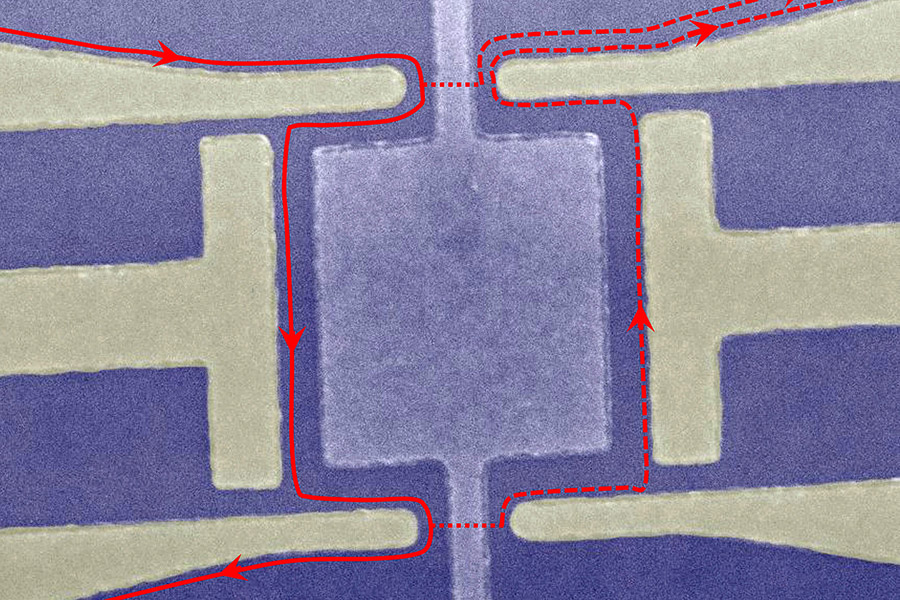Purdue receives funding to investigate how electronic excitations interfere
On the frontier of quantum computing, scientists are exploring how electronic excitations – collective behavior of many electrons acting in concert– behave differently in comparison to ordinary electrons. In certain regimes of ultra-low temperature and high magnetic field, electronic excitations in a two-dimensional plane act as if they carry on a fraction of the ordinary electron charge and obey unusual properties when any two particles are exchanged. Some of these properties may be useful for quantum information processing.
These fractionalized electrons, known as fractional quantum Hall quasiparticles, could become the basis for a type of quantum computing known as topological quantum computing in which the basic pieces of information, known as qubits, are less susceptible to environmental interference.
"It's like the topological qubits are wearing noise-cancelling headphones," said Michael Manfra, the Bill and Dee O’Brian Chair Professor of Physics and Astronomy at Purdue University. "They can be in a room filled with noisy teenagers, and they just continue doing their work."

Manfra, who is also a professor of materials engineering, and electrical and computer engineering, is involved in a newly announced $37 million effort by the U.S. Department of Energy Office of Basic Energy Science to study and advance the emerging field of quantum information science. Manfra's research team will conduct experiments using a nanoscale device, called an interferometer, that creates an interference pattern to try to probe the properties the fractional quantum Hall quasiparticles.
"Because the excitations behave in a wave-like manner, we can use the interferometer to split the wave and have it recombine somewhere else. Our experiments will test more rigorously whether these excitations really do have fractional statistics," Manfra said.
A proof of concept experiment was published in Nature Physics in March; the experiment was the first to show quasiparticles interfering at the famous n=1/3 fractional quantum Hall state. Manfra's group will now expand on that work.
"We're not trying to build a qubit right away, but to do some basic science," Manfra said. "What we're trying to do is to measure the statistical properties of the fractional quantum quasiparticles."
In a news release, Paul Dabbar DOE under secretary for science, said that quantum information science looks to utilize intricate quantum phenomena to create new ways of processing information, with the goal of creating powerful new computing tools.
"America was a pioneer in the establishment of the Information Age," Dabbar said. "It's critical that we remain in the forefront of information science and technology, and this new research will help ensure continued U.S. leadership in the information economy in the years ahead."
Source: Purdue receives funding to investigate how electronic excitations interfere
